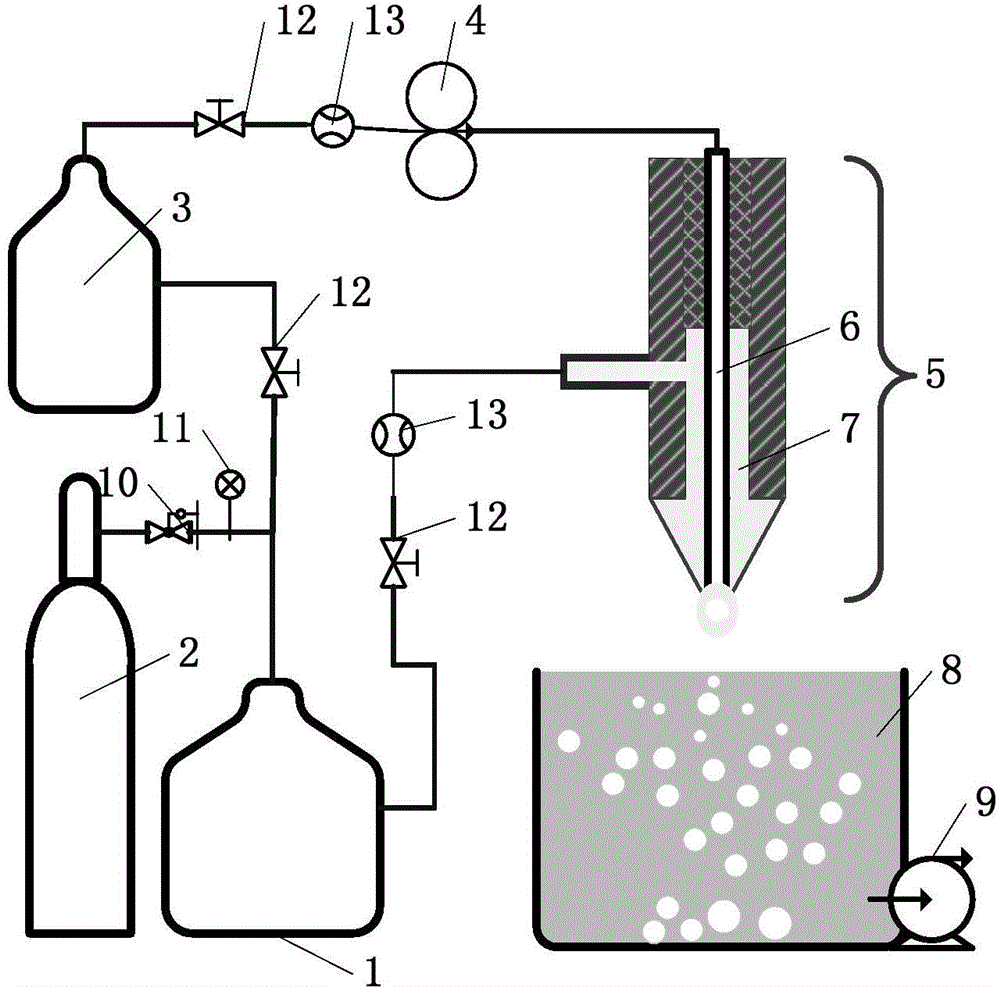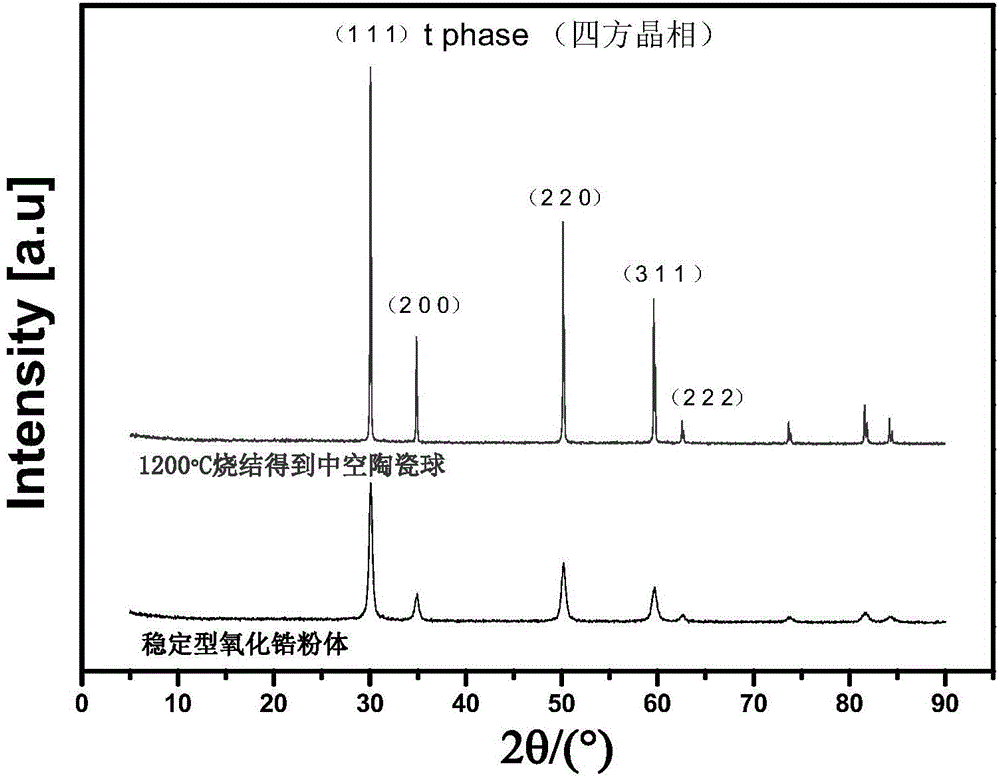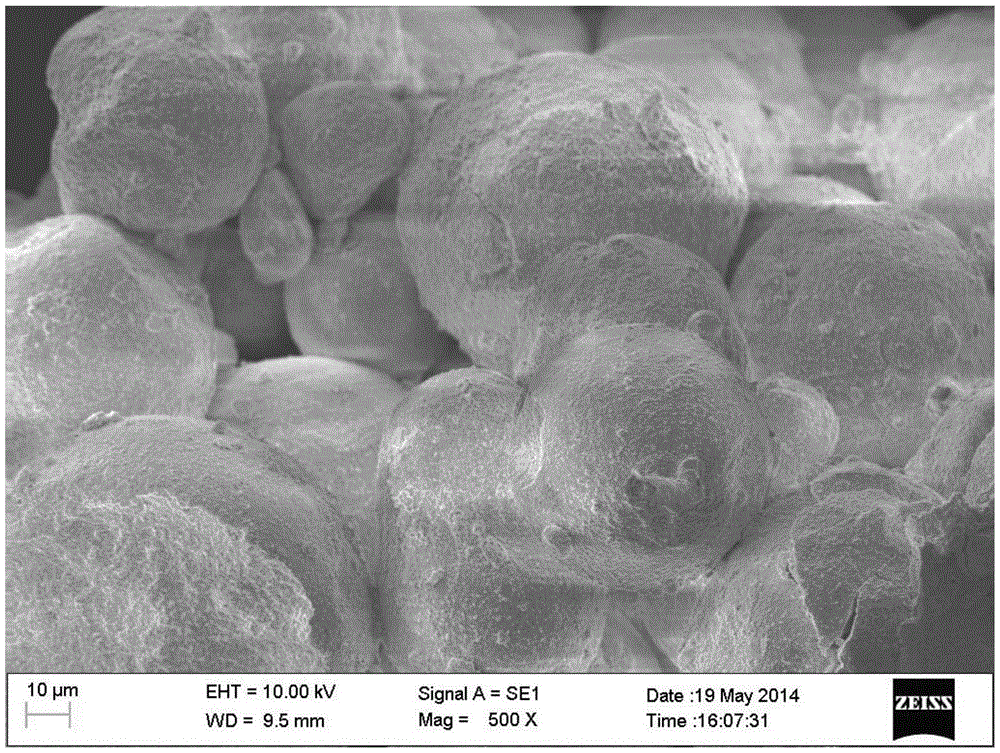Method for preparing ceramic hollow microspheres by using peristaltic pump assisted coaxial micro-fluidic system
A technology of a microfluidic system and a peristaltic pump is applied in the field of preparing ceramic hollow microspheres assisted by a peristaltic pump-assisted coaxial microfluidic system, which can solve the problems of high cost, low strength, weakening the advantages of hollow microspheres, and the like, and achieve a simple process flow. , low energy consumption, controllable sphere size and hollow rate
- Summary
- Abstract
- Description
- Claims
- Application Information
AI Technical Summary
Problems solved by technology
Method used
Image
Examples
Embodiment 1
[0034] Step 1: Add 8g of polyethersulfone to 90g of NMP, stir to dissolve, then add a mixture of 1.95g of stabilized zirconia ceramic powder and 0.05g of iron oxide powder, continue to stir and mix evenly, and age and degas to obtain a slurry.
[0035] Step 2: Use deionized water as the non-solvent. The inner tube 6 of the coaxial nozzle has a diameter of 0.15 mm and the outer tube 7 of the coaxial nozzle has a diameter of 0.5 mm. The distance between the coaxial nozzle 5 and the non-solvent tank 8 is set to 10 mm. First open the compressed nitrogen drive pressure system: compressed nitrogen cylinder 2, pressure reducing valve 10, precision pressure gauge 11, screw valve 12, rotameter 13 to deliver the driving pressure within 0.1MP, by adjusting the non-solvent pipeline The rotary valve and the peristaltic pump speed (0.5 rev / min) make the non-solvent in the non-solvent tank 3 smoothly drop out in droplet shape. Then pour the slurry prepared in step 1 into the slurry tank 1, ...
Embodiment 2
[0039] Step 1: Add 28g of polyethersulfone to 60g of NMP, stir to dissolve, then add a mixture of 11.5g of stabilized zirconia ceramic powder and 0.5g of iron oxide powder, continue to stir and mix evenly, age and degas to obtain a slurry.
[0040] Step 2: Use deionized water as a non-solvent. Choose a coaxial nozzle with a diameter of 0.5 mm in the inner tube 6 of the coaxial nozzle and a diameter of 1.2 mm in the outer tube 7 of the coaxial nozzle. Set the coaxial nozzle 5 and the non-solvent tank 8. The distance between them is 50mm. First open the compressed nitrogen drive pressure system: compressed nitrogen cylinder 2, pressure reducing valve 10, precision pressure gauge 11, screw valve 12, rotameter 13 to deliver the driving pressure within 0.1MP, by adjusting the non-solvent pipeline The rotary valve and the peristaltic pump speed (0.5 rev / min) make the non-solvent in the non-solvent tank 3 smoothly drop out in droplet shape. Then pour the slurry prepared in step 1 in...
Embodiment 3
[0044] Step 1: Add 30g of polyethersulfone to 60g of NMP, stir to dissolve, then add a mixture of 9.8g of stabilized zirconia ceramic powder and 0.2g of iron oxide powder, continue to stir and mix evenly, age and degas to obtain a slurry.
[0045] Step 2: Use deionized water as the non-solvent. The inner tube 6 of the coaxial nozzle has a diameter of 0.8 mm and the outer tube 7 of the coaxial nozzle has a diameter of 3.0 mm. The distance between the coaxial nozzle 5 and the non-solvent tank 8 is set to 50 mm. First open the compressed nitrogen driving pressure system: compressed nitrogen cylinder 2, pressure reducing valve 10, precision pressure gauge 11, screw valve 12, rotameter 13, the driving pressure of which the delivery pressure is within 0.2MP, by adjusting the non-solvent pipeline The rotary valve and the peristaltic pump speed (2.0 rev / min) make the non-solvent in the non-solvent tank 3 flow out smoothly in the form of droplets. Then pour the slurry prepared in step...
PUM
 Login to View More
Login to View More Abstract
Description
Claims
Application Information
 Login to View More
Login to View More - R&D
- Intellectual Property
- Life Sciences
- Materials
- Tech Scout
- Unparalleled Data Quality
- Higher Quality Content
- 60% Fewer Hallucinations
Browse by: Latest US Patents, China's latest patents, Technical Efficacy Thesaurus, Application Domain, Technology Topic, Popular Technical Reports.
© 2025 PatSnap. All rights reserved.Legal|Privacy policy|Modern Slavery Act Transparency Statement|Sitemap|About US| Contact US: help@patsnap.com



